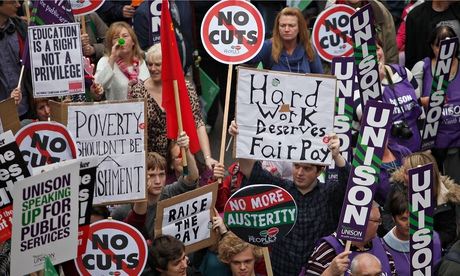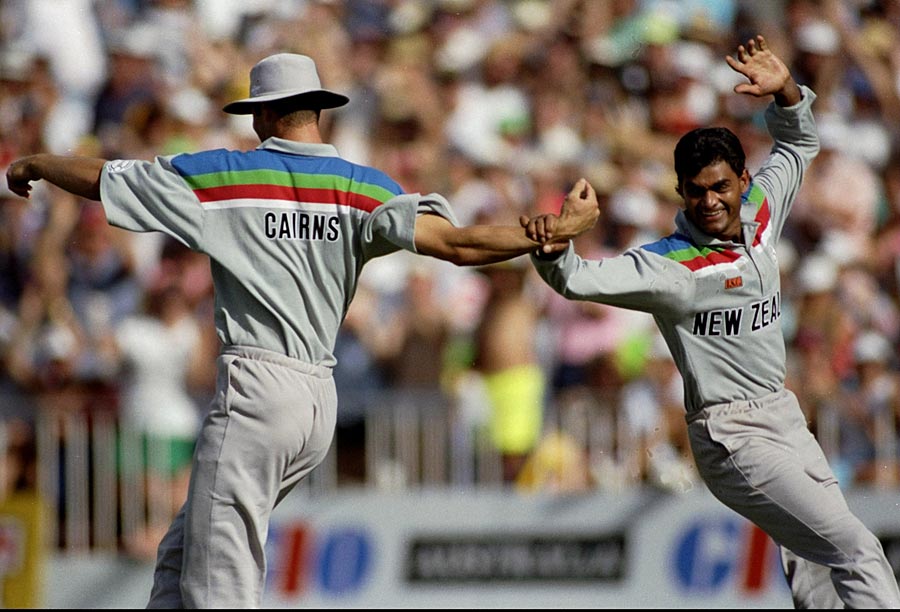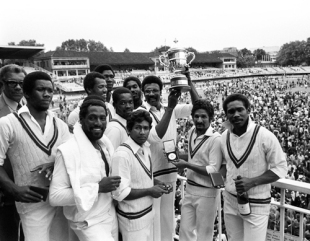Natasha Landell-Mills and Jim Peterson in The Financial Times
Yes - Separating audit from consulting would prevent conflicts of interest.
Auditors are failing investors. The situation has become so dire that last week the head of the UK’s accounting watchdog said it was time to consider forcing audit firms to divest their substantial and lucrative consulting work, writes Natasha Landell-Mills.
This shift from the Financial Reporting Council, which opposed the idea six years ago, is welcome. But breaking up the Big Four accountancy firms — PwC, KPMG, EY and Deloitte — can only be a first step. Lasting reform depends on auditors working for shareholders, not management.
Auditors are supposed to underpin trust in financial markets. Major stock markets require listed companies to hire auditors to verify their accounts, providing reassurance to shareholders that material matters have been inspected and their capital is protected. In the UK, auditors must certify that the published numbers give a “true and fair view” of circumstances and income; that they have been prepared in accordance with accounting standards; and that they comply with company law.
But audit is failing to meet investors’ expectations. The failure of Carillion, linked to aggressive accounting, is just the latest high profile example. And this is not just a UK phenomenon. The International Forum of Independent Audit Regulators found that 40 per cent of the audits it inspected were sub-standard.
Multiple market failures need to be addressed. The most obvious problem is that audit quality is invisible to those whom it is intended to benefit: the shareholders. It is difficult to differentiate good and bad audits. Even with the introduction of extended auditor reports in the UK (and starting in 2019 in the US), formulaic notes about audit risks often hide more than they convey.
Even when questions are raised about the quality of audits, shareholders almost always vote to retain auditors, with most receiving at least 95 per cent support. Last year, 97 per cent of Carillion shareholders voted to re-appoint KPMG. Lack of scrutiny creates space for conflicts of interest. Auditors who feel accountable to company executives rather than shareholders will be less likely to challenge them. These conflicts are exacerbated when audit firms also sell other services to management teams, particularly if that consultancy work is more profitable.
The dominance of the Big Four in large company audits is another concern: when large and powerful firms are able to crowd out high quality competitors, the damage is lasting.
Taken together, these failures have resulted in a dysfunctional audit market that needs a broad revamp. Splitting audit from consulting would prevent the most insidious conflict of interest. When non-audit work makes up around 80 per cent of fee income for the Big Four (and just over half of income from audit clients), the influence of this part of the business is huge.
Current limits on consulting work have not eliminated this problem. They are often set too high or can be gamed, while auditors can still be influenced by the hope of winning non-audit work after they relinquish the audit mandate.
There is quite simply no compelling reason why shareholders should accept these conflicts and the resulting risks to audit quality introduced by non-audit work. But other reforms are necessary.
Auditors should provide meaningful disclosures about the risks they uncover. They need to verify that company accounts do not overstate performance and capital and that unrealised profits are disclosed.
Engagement between shareholders and audit committees and auditors should become the norm, not the exception. Shareholders need to scrutinise accounting and audit performance, and use their votes to remove auditors or audit committee directors where performance is substandard.
Finally, the accounting watchdogs must be far more robust on audit quality and impose meaningful sanctions. Even the best intentioned will struggle against a broken system.
No — Lopping off advisory services would hurt performance
The recent spate of large-scale corporate accounting scandals is deeply worrying and raises a familiar question: “Where were the auditors?” But the correct answer does not involve breaking up the four professional services firms that dominate auditing, writes Jim Peterson.
Forcing Deloitte, EY, KPMG and PwC to shed their non-audit businesses would neither add competition nor boost smaller competitors. Lopping off the Big Four’s consulting and advisory services would degrade their performance, weaken them financially, and hamper their ability to meet the needs of their clients and the capital markets.
Although the UK regulator is raising competition concerns, the root problem is global. The growth of the Big Four, operating in more than 100 countries, reflects their multinational clients’ needs for breadth of geographic presence and specialised industry expertise.
The yawning gap in size between the Big Four and their smaller peers has long since grown beyond closure: even the smallest, KPMG, took in $26.4bn in 2017, three times as much as BDO, its next nearest competitor. If pressed, risk managers of the smaller firms admit to lacking the skills and the risk tolerance even to consider bidding to audit a far-flung multinational.
The suggestion that competition and choice would be increased by splitting up the Big Four is doubly unrealistic. Forcing them to spin off their non-auditing business would not create any new auditors. We would continue to see dilemmas like the one faced by BT last year when it set out to replace PwC after a £530m discrepancy was uncovered in the accounts of its Italian division. The UK telecoms group ended up picking KPMG for want of alternatives, even though BT’s chairman had previously been global chairman of KPMG.
Similarly, Japan’s Toshiba tossed EY in favour of PwC in 2016, only to suffer disagreements with the second firm — this led to delays in its financial statements and an eventual qualified audit report. Wish as it might, Toshiba has no further choices, because of business-based conflicts on the part of Deloitte and KPMG.
A split by industry sector — say, assigning auditing of banking and technology to Firm A-1, while manufacturing and energy go to new Firm A-2 — would be no better. Each sector would still be served by just four big firms. If each firm were split in half, the two smaller firms would struggle to amass the expertise, personnel and capital necessary to provide the level of service that big companies expect.
Splitting auditing from advisory work is a solution in search of a problem. Many jurisdictions, including the UK, EU and US, restrict the ability of firms to cross-sell other services to their audit clients. Concerns about inherent conflicts of interest are overblown.
The enthusiasm for cutting up the Big Four also fails to recognise how the world is changing. The rise of artificial intelligence, blockchain and robotics is reshaping the way information is gathered and verified. Auditors will need more — rather than less — expertise.
Warehouse inventories, crop yields and wind farms will soon be surveyed rapidly and comprehensively in ways that could easily displace the tedious and partial sampling done for decades by squadrons of young audit staff. But to take advantage of these advances, auditors need to have the scale, the financial strength and the technical skills to develop and offer them.
These tools will also deliver data that management needs for operational and strategic decision making. If auditors are to be barred from providing this kind of advisory work, the legitimacy of methods that have prevailed since the Victorian era is under threat. Investors will require some sort of audit function, but who would provide it? Splitting up the Big Four will achieve nothing if they fail and are replaced by arms of Amazon and Google.
Auditors should be held accountable for their mistakes, but these issues are too complex for simplistic solutions. Rather than a quick amputation, we need a full-scale re-engineering of the current model with all of its parts.
IN NOVEMBER 2010, Anil Kumble, a legend of unquestioned personal integrity, retired from active cricket and got into cricket administration with the stated mission of bringing fairness, transparency and probity to the running of the sport. It transpired, however, that while serving as president of Karnataka’s state cricket association—putting him in a position to exercise control over players in the region—Kumble in his private capacity ran a player-management agency, and was thus also able to further the careers of players signed up with his firm.
When Kumble was asked about the conflicting interests inherent in this situation, this was his answer: “I don’t see any conflict of interest here … and I have to look after myself. At this stage of my career, I have to do that. Otherwise, you’d have to become like Gandhi and give up everything.” Implicit—no, explicit—in these words is a casual acceptance of self-interest and an equally casual dismissal of any motive beyond personal benefit.
Shortly after Ravi Savant, the president of the Mumbai Cricket Association, was selected as the BCCI’s new treasurer last month—replacing Ajay Shirke, who resigned in protest over the board’s handling of the Indian Premier League spot-fixing scandal—he dared to point out the obvious. “Dhoni,” Sawant said, “should immediately dissociate himself from the management firm while he is captain.” Sawant further suggested that the captain’s contract with the board be examined, and that Dhoni be given notice of conflict of interest.
Within minutes, literally, of Sawant’s statement hitting the headlines, the board hierarchy lined up in repudiation. “Ravi Sawant was speaking in his personal capacity,” was the explanatory chorus. Interim president Jagmohan Dalmiya stated that the board had “taken note” of the reports—about time, too, given that the media has been talking of this for over four years—and would “look into it”.
“But we are not going to hound someone,” Dalmiya added.
Dalmiya’s cautionary codicil had the undertow of personal experience. In December 2006, the BCCI’s executive committee met to consider a report charging him with corruption and misappropriation of funds dating back to the 1996 World Cup. N Srinivasan, then the board treasurer, prosecuted the case. Dalmiya appeared in his own defense but was, in the words of an administrator present at the time, “shredded” by Srinivasan.
The board voted 29–2 in favor of punitive action and, in an official statement, said that Dalmiya had been “expelled from the board for life” and “barred from holding any position in any organs of the BCCI, including state associations.”
“I am being hounded,” Dalmiya said then.
The story has an interesting coda. In June 2007, the Calcutta High Court lifted the suspension on the grounds that the BCCI had filed a false affidavit, misled the court, and committed perjury. The core issue was a BCCI claim that Dalmiya had been suspended under a specific clause in the constitution. However, no such clause existed at the time. It was post-facto written into the constitution, and the amendment had not even been officially ratified when Justice Indira Banerjee heard the case and tossed the suspension on the ground that it was “illegal”. (Of course, it was only the suspension that was overturned, not the facts relating to the misappropriation itself.)
Cut to the board’s annual report of 2010–2011. The BCCI treasurer MP Pandove began his presentation of accounts with these words: “I feel the figures, like facts, are stubborn in character. Accordingly, I would like to take all members with me through the figures, which speak a thousand words, without saying.” Tucked into his accounting at the very end, just this side of an afterthought, was a particularly interesting item: “Reversal of Amount Recoverable from Mr Jagmohan Dalmiya—PILCOM/INDCOM/World Cup 1996 (Refer Note 7(b) of Schedule 15): ₹ 466,416,703.”
When Dalmiya, after assuming the interim presidency, announced a programme of minor correctives that he dubbed “Operation Clean-Up”, here’s what was forgotten: the problem in cricket is not individual acts of corruption by a few naïve, greedy cricketers. Nor is it the casual acceptance of conflict of interest by otherwise upright men like Kumble and Dhoni. These are only symptoms of a far more invasive disease.
The problem is rooted in the fact that in the years since 1996, the BCCI perfected to a fine art the business of cricket, and brought unimaginable wealth into the sport, without any revision of operating procedures to guard against corruption. Thus means, opportunity, and the ability to rationalise aberrant behavior—the three classic elements of the fraud triangle—came together. And to this, the BCCI systematically added a fourth element as a safety net: over-arching political patronage.
THE PRESENCE OF POLITICIANS in the realm of cricket administration is not new. NKP Salve was board president from 1982 to 1985, while serving as minister in the Cabinet of then prime minister Indira Gandhi. A former club cricketer and first class umpire, Salve loved the game, so much so that Gandhi reportedly took him to task for spending more time on cricket than politics. “Madam,” Salve is said to have responded, “I am doing what I really love, and will gladly give up my Cabinet position to continue working for cricket.”
“The presence of politicians in cricket then was very necessary,” a senior administrator who made his bones during that time told me. “While the quality of Indian cricket was improving, there was absolutely no money in the sport. Politicians and public figures who were motivated by passion for the sport came in to try and save cricket from imminent bankruptcy.”
The turnaround began when Salve spearheaded the successful bid to bring the World Cup to India in 1987, and roped in Reliance Industries as sponsor. By 1996, when the BCCI led the bid to bring the World Cup to India, Pakistan and Sri Lanka, the board—under the leadership of Dalmiya and IS Bindra—had engineered a tectonic shift in the economics of Indian cricket. The Dalmiya-Bindra combine convinced ITC to come on board as title sponsors (it was known as “The Wills World Cup”) for a sum of approximately $10 million, they sold television rights for another $10 million, and monetised anything else their imagination could conceive. (Coca-Cola was “the official World Cup soft drink”.)
“Before the World Cup, politicians entered the game because there was no money,” the administrator quoted above said. “After the Cup, politicians entered the game because there was money.”
Until the mid 2000s, the grant given by the BCCI to state cricket associations was measured in lakhs. The lesser state bodies—the bottom feeders of the domestic competition, without a proper stadium and other facilities to their names—got between ₹ 15-25 lakh annually.
It was Lalit Kumar Modi who changed all that when, with the blessings of then BCCI president Sharad Pawar, he set out to monetise every aspect of cricket. It began in late 2005 when he signed up Nike as kit sponsor of the national team for a sum of $27.2 million, and reached its climax a year later when he sold television rights for the IPL to a Sony-World Sports Group consortium for $1.026 billion.
It was from that moment on that Indian cricket began valuing its worth in the billions—and as the money began to pour in, the BCCI brass put it to use to cement alliances, to buy silences.
So why are politicians so eager to run Indian cricket? Before we come to what happens to all that money, consider the case of Sharad Pawar, who does at least have some indirect affiliation with the sport—his late father-in-law Sadu Shinde was a Test cricketer of 1940s vintage. Before Pawar became president of the BCCI in 2005, his appearances in the national headlines usually involved famines, rising food prices, or farmer suicides. After 2005, he was transformed into cricket’s knight in shining armour—the man who saved the game from the clutches of the rapacious Dalmiya and who, through the IPL, gave the public a dazzling new circus where earlier he was vilified for not being able to provide bread.
Then there is Arun Jaitley, a politician with ambition but no base, who for 13 years and counting has ruled over the Delhi and Districts Cricket Association despite serial scandals; Narendra Modi, who saw in cricket another oppotunity to remake his image; Lalu Prasad Yadav, the doting father of a son with cricketing ambitions, who took over the Bihar Cricket Association and used his clout to get Tejaswi Prasad Yadav gigs with the India Under-19 team and then with the Delhi IPL team.
The list has only expanded in recent years, with one association after another anointing a politician at its head. (As you read this, Pawar is readying for a second stint as Mumbai Cricket Association chief. Ask yourself why he would want a regional post after having headed both Indian and world cricket.)
For starters, the annual grant to state associations, first raised to ₹ 8 crore (₹ 80 million) when Pawar took control, was more than doubled before the end of his tenure. From then on, you could run a state association with no major cricketing or talent-development activities or even infrastructure to speak of, and you would still get close to ₹ 20 crore (₹ 200 million) every year, regular as clockwork—without the burden of having to strictly account for how you spent the money.
If your association is influential, if your vote is crucial to the continuance in power of the entrenched brass, then this minimum grant is mere pin money. The powerful associations are allotted marquee games, and paid substantial sums for hosting them. The corresponding stick, that these games could not be allotted, is sufficient to bring recalcitrant associations into line. When Dalmiya’s fate was being decided in 2006, this implicit threat was enough to prompt even his own protégée Ranbir Singh Mahendra, who defeated Sharad Pawar in the board presidential elections in 2005, into voting against Dalmiya.
Associations also get to apply for ‘special grants’ that are routinely sanctioned; a particular favorite has been “stadium development”. Thus, if you control a state association and you play by the rules, you can run the tab as high as ₹ 60 crore (₹ 600 million) in a year.
These sums are not accounted for individually in the board’s annual reports, but bucketed under opaque and vague line entries such as “cricket development activities” and “establishment expenses”. Nor is this spending detailed in the reports of state cricket associations—in part because most don’t even file annual reports. Without itemised and detailed accounting, once the money is doled out to the states, there is no way for anyone to keep track of what happens to it, which may be exactly the point: by giving out such large sums with little or no oversight, the BCCI is tacitly buying the cooperation of the state associations. The state associations are effectively shielded from scrutiny—and in the unlikely event of a zealous governmental department poking its official nose into the finances, the board has sufficient political clout to ensure that such inquiries die still-born.
Instances abound. I’ll pick a lesser-known one as exemplar of how deep the rot extends.
Oh, by the way—this grant, in two tranches of 5.71 and 9.59 acres, was first made in 1992. In February 1996, Prime Minister PV Narasimha Rao, who also held the defence portfolio, annulled this agreement with an official order, though no one acted to reclaim the land. Almost 17 years later, the defence ministry is still trying to figure out how the HCA held on to it all these years.
See what political patronage can do?
Thus a Kumble, of unimpeachable personal character, can see nothing wrong in a clear conflict of interest; MS Dhoni, otherwise a young man of spine and integrity, sees a business opportunity in his elevation to the post of national cricket captain. The BCCI’s ultimate achievement is the creation of an environment no one can enter without being subsumed by the pervasive stench of corruption.






